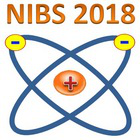Speaker
Prof.
Motoi Wada
(Doshisha University)
Description
Plasma surface interaction in a cesiated negative hydrogen (H$^-$) ion source determines the overall Cs consumption rate of the source. The Cs coverage on the plasma grid (PG) surface is reduced mainly by two mechanisms. The first mechanism is the removal of Cs from the PG by direct sputtering, or ion induced desorption. The second is the deposition of atoms that form a layer above the Cs covered low work function PG surface. The first mechanism associated with incoming ions removes some part of the loosely bound atoms on the surface to reduce the deposition rate. The second process also affects the first, because the PG surface contaminated with deposited atoms should result a Cs removal rate different from the original value of the condition with the half monolayer of Cs on top of the pure PG material.
Removal rates of Cs atoms on PGs have been estimated using a collision cascade simulation code ACAT (Atomic Collisions in Amorphous Target). The code has predicted the enhanced removal of Cs by the interlayer of medium mass number elements between the bulk PG material and the Cs top layer. The simulation has to employ several assumptions that are too ideal as the PG surface condition of an actual ion source; the simulation does not take impurity effects into account. This paper attempts to study the contribution of the second process to the Cs recycling; how the incoming atoms and ions including those produced and transported in plasma modify the surface condition and change the Cs coverage on the PG. Lessons from tungsten filament driven arc discharge sources are compared with the simulation results, and the expected performance including Cs recycling of a RF H$^-$ source is discussed.
Primary author
Prof.
Motoi Wada
(Doshisha University)

